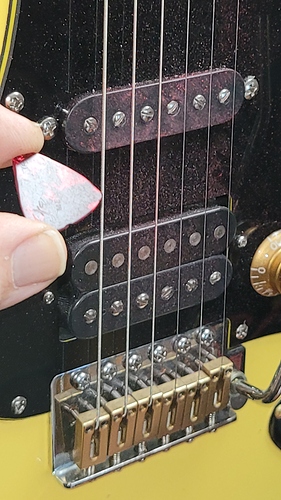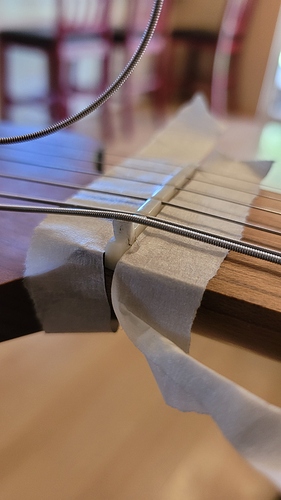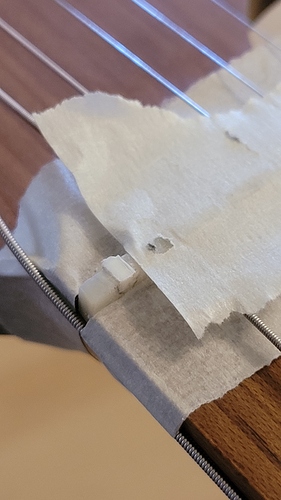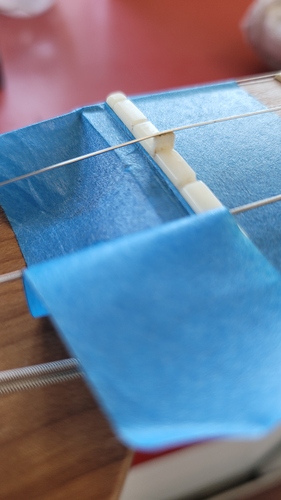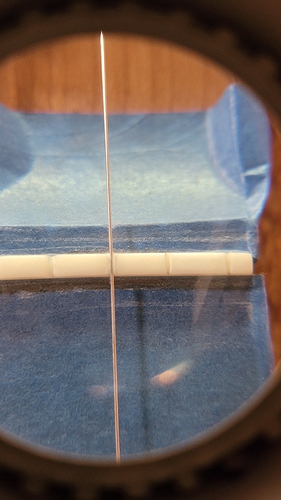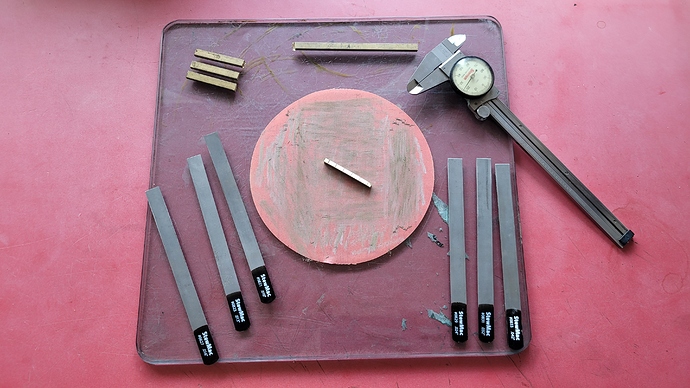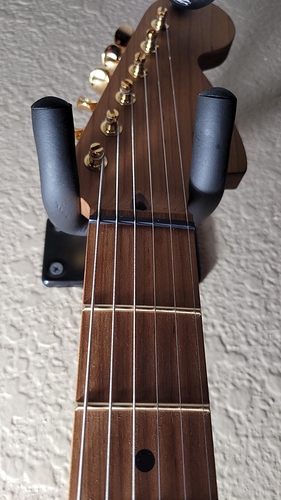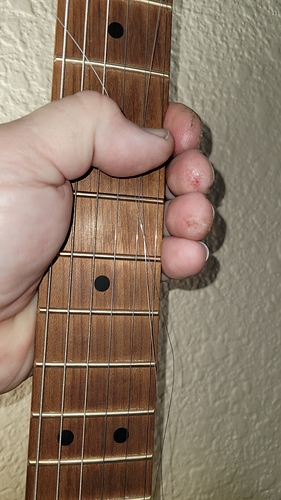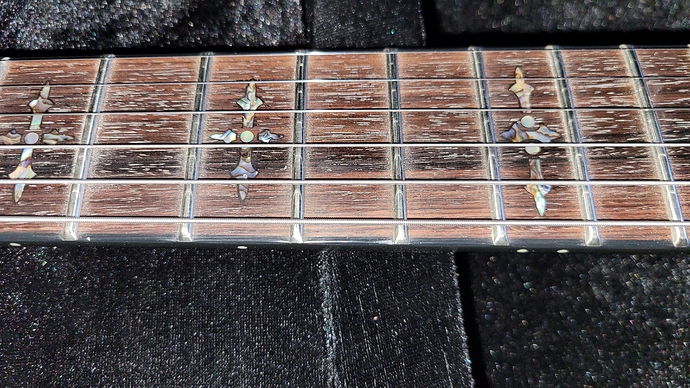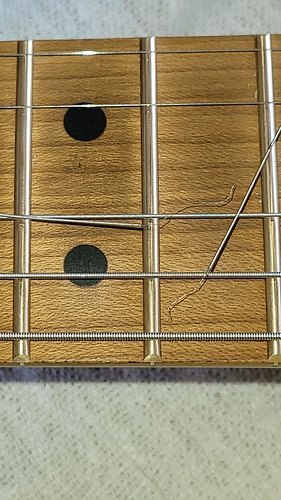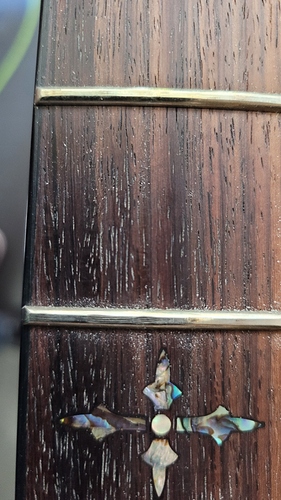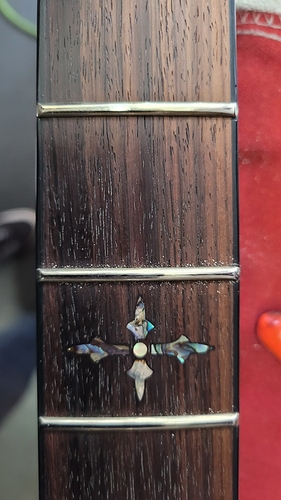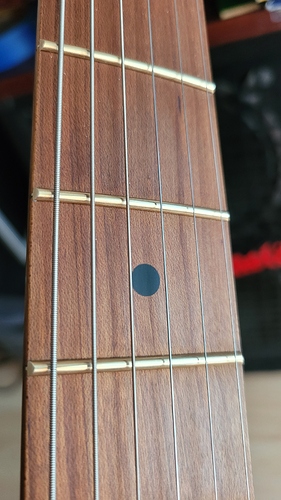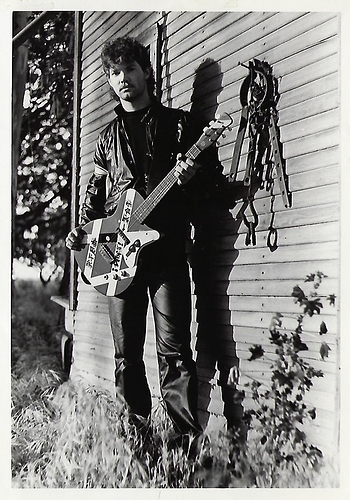@garbeaj - That’s an awesome diagram. Very well thought out and greatly appreciated!!@!!
I set my strings pretty deep because I often pick chords backwards and i play really violently, so the depth keeps me from blowing the strings out of the nut.
I also file deep grooves under the strings to allow me to push down on the strings behind the nut, as shown in this image:
I also tried one of the white Tusq XL nuts, but my low ‘E’ string sawed right through it in just a few weeks.
I don’t have to ‘reset’ my Stratocaster or my Floyd Rose equipped Jackson San Dimas or my Schecter Hellraiser C1FR. No matter how I play it or how I use the bar.
Now, on my YelloStrat, when I first put it together, I used some old tremolo springs I had laying on the bench, and I had trouble with the guitar returning to pitch after string bends. Once i.put the genuine Fender Tremolo Springs in it, the problem went totally away.
My only complaint with the Floyd Rose is the locking nut.
Here’s what happened a few weeks ago when I did a wild slide on my Schecter Hellraiser C1FR and banged into the locking nut…
Ok,
Getting back to your comment about needing to ‘reset’ a tremolo with a slight ‘nudge’ on the bar. In general, I see this with worn fulcrums (knife edges) on Floyd Rose and when the stock Fender bridge plate begins to wear grooves in the screw shanks.
This is a commom problem with non-genuine Fender Tremolo to body screws, like generic E-Bay screws sold in bulk.
It’s also a HUGE problem on the old (soft) “wood screw” style Floyd Rose Bridge screws, a significant problem on the ‘Floyd Rose Special’ tremolos, and less common, but still somewhat of an issue on the Floyd Rose 1000.
I use the titanium bridge posts/fulcrums on all my Floyd Rose equipped guitars and I use only genuine Fender or Floyd Rose tremolo parts.
Hope this helps!!!

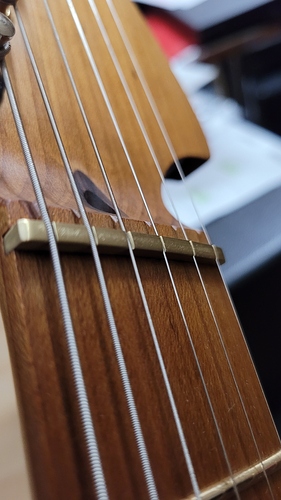
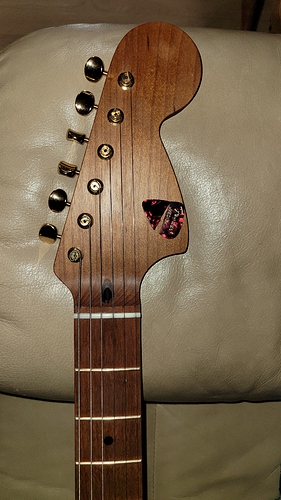

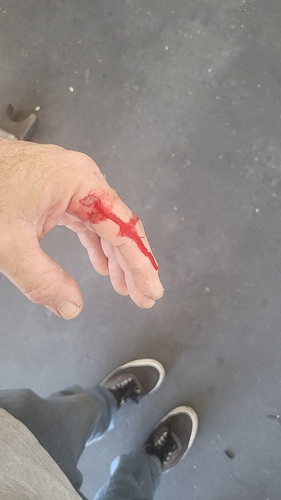
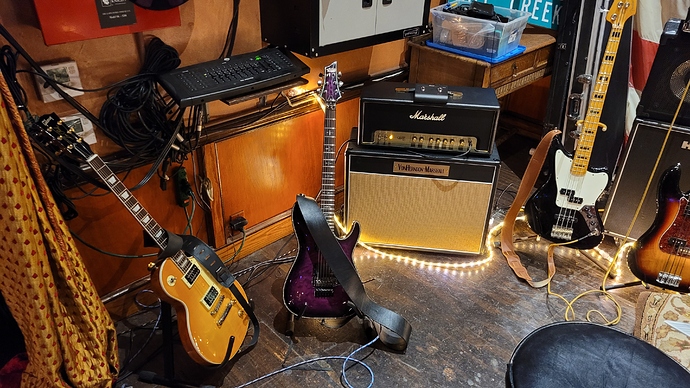
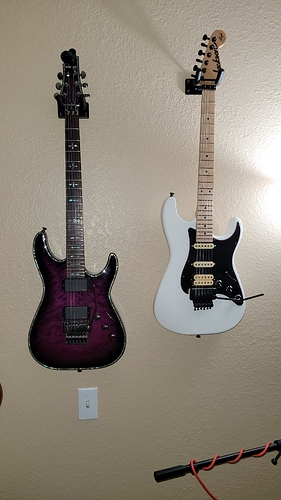

 How the heck did you do that?!
How the heck did you do that?!